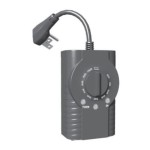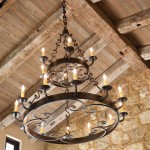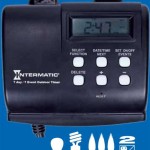How to Test Low Voltage Outdoor Lighting
Low voltage outdoor lighting provides a beautiful and functional way to illuminate your landscape. From accent lighting to pathway lighting, these systems offer a myriad of design possibilities. However, like any electrical system, they can occasionally malfunction. Understanding how to test low voltage outdoor lighting can save you time and money by enabling you to identify and troubleshoot common issues yourself.
1. Identifying the Problem
Before diving into testing, pinpoint the specific issue you're facing. Is the entire system not working, or is just one fixture out? Are the lights flickering or dimming? By defining the problem, you can narrow down the potential causes and focus your testing efforts.
For instance, if the entire system is off, the problem might lie with the transformer, the power source, or a blown circuit breaker. If only one fixture is out, the issue could be a faulty bulb, a loose connection, or a damaged wire. Understanding the nature of the malfunction will guide you towards the appropriate testing procedures.
2. Safety Precautions
Low voltage systems operate at a lower voltage than standard household wiring, making them generally safer. However, it's still crucial to prioritize safety when working with electrical equipment. Always disconnect the power supply to any fixtures or wires you're testing. This can usually be achieved by flipping the circuit breaker or switch that controls the outdoor lighting system.
Never test live wires or fixtures, and avoid working with wet electrical components. If you're unsure about any aspect of the testing process, consult a qualified electrician.
3. Testing the Transformer
The transformer is the heart of a low voltage outdoor lighting system. It converts the high voltage from your main electrical supply to the low voltage required by the fixtures. A faulty transformer can cause the entire system to fail.
To test the transformer, you'll need a multimeter. Make sure the power supply to the transformer is disconnected. Set the multimeter to the AC voltage setting, and place the probes on the output terminals of the transformer. If the transformer is working correctly, you should get a reading close to the voltage specified in its specifications, typically 12 volts.
4. Inspecting the Wiring
Damaged or loose wiring can disrupt the flow of electricity and prevent lights from working. Inspect the wiring from the transformer to the fixtures, looking for any signs of damage, such as cuts, fraying, or corrosion.
You should also check the connections at each fixture and the transformer. Make sure the wires are firmly secured in the connectors. Pay close attention to the ground wire, which is essential for safety. If you find any issues with the wiring, you may need to replace the damaged sections or tighten loose connections.
5. Testing the Fixtures
Once you've ruled out problems with the transformer and wiring, you can check the fixtures themselves. Start by testing the bulbs. Replace any bulbs that are burnt out. If the bulb is working, you can test the fixture by connecting it to a known good power source, such as a battery or a separate low voltage power supply.
If the fixture lights up, the problem might be a loose connection or a faulty switch. If the fixture doesn't light up even with a good power source, the fixture itself could be faulty and may need to be replaced.
6. Additional Troubleshooting Tips
If you're still unable to pinpoint the problem, consider these additional troubleshooting tips:
- Check the circuit breaker for the outdoor lighting system. A tripped breaker can interrupt the power supply.
- Make sure the timer or photocell controlling your lights is working properly.
- Examine the ground wire for any damage or disconnections.
- If you have a new system, make sure it's installed correctly according to the manufacturer's instructions.
By following this guide, you can troubleshoot common issues with your low voltage outdoor lighting system and restore its functionality. Remember to always prioritize safety and consult a qualified electrician if you are unsure about any aspect of the testing process.

Using A Voltmeter To Troubleshoot Your Landscape Lights

Planning Your Low Voltage Outdoor Landscape Lighting 1000bulbs Blog

Outdoor Low Voltage Lighting Diy Family Handyman

Helpful Hints On Low Voltage Landscape Lighting Transformers

The Easiest Way To Install Low Voltage Landscape Lighting Abby Organizes

Planning Your Low Voltage Outdoor Landscape Lighting 1000bulbs Blog

Low Voltage Lighting Info Tips Destination Flip The Switch

Troubleshooting A 12v Landscape Light System

The Easiest Way To Install Low Voltage Landscape Lighting Abby Organizes

The Best Low Voltage Landscape Lighting Of 2024 Top Picks By Bob Vila
Related Posts







